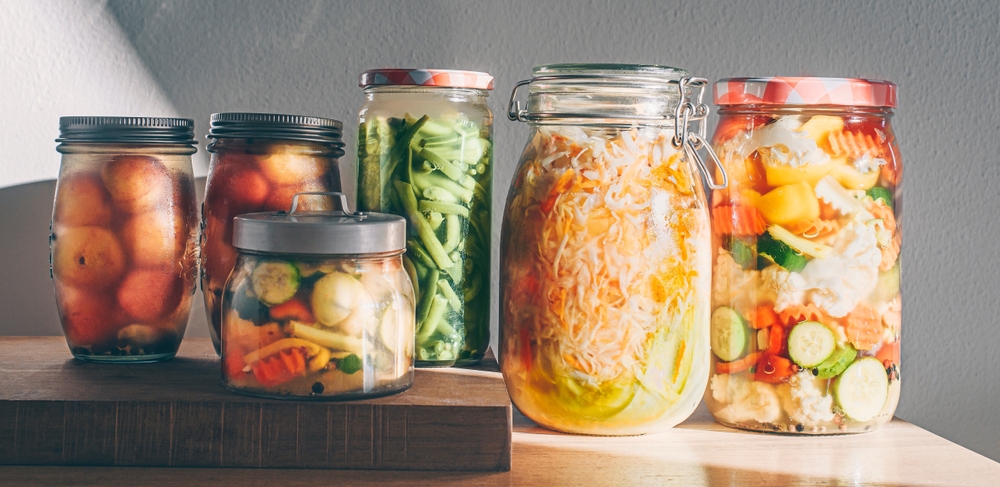Quick fermentation projects for home cooks
Short, reliable fermentation projects can expand a home cook’s flavor toolkit without demanding hours of hands-on time. This article maps approachable projects, ingredient sourcing tips, and ways to pair ferments with everyday meals for plantbased and omnivore kitchens.

Fermentation is a practical way for home cooks to add depth, preservation, and umami to everyday meals without complex equipment. Quick projects—like lacto-fermented vegetables, quick miso, or herbal vinegar infusions—fit into mealprep schedules and seasonal sourcing plans. These faster ferments develop flavor in days to weeks rather than months, making them suitable for cooks exploring artisan techniques, flavorscience concepts, or plantbased options alongside familiar pantry staples.
fermentation basics for quick projects
Start simple: salt, clean produce, and time are often enough to begin a safe short ferment. For lacto-fermentation, use a 1.5–2% salt brine by weight to encourage desirable bacteria and discourage spoilage; for quick pickles, an acid bath with vinegar speeds development. Maintain clean jars and submerge solids beneath the brine to limit mold risk. Temperature matters—cooler spaces slow fermentation, while room temperature (18–22°C) encourages steady activity. Small batches reduce waste and let you tweak salt, sugar, or spice levels during subsequent makes.
building umami with simple ferments
Umami can be amplified with straightforward ferments: quick koji-inoculated miso-style pastes, garlic fermented in salt, or cultured tomato paste concentrate savory depth. Even a few days of fermentation can round harsh edges and create savory glutamates naturally. Use cooked and cooled grains or beans as substrates for plantbased pastes, or reserve whey as a starter for quicker acidification. Taste as you go; incremental sampling lets you reach a preferred umami level without overfermenting. These condiments pair well with grains, roasted vegetables, and simple proteins.
pairing ferments with meals and mealprep
Think of ferments as dynamic condiments that lift everyday mealprep. A quick kimchi or fermented salsa brightens grain bowls, while a mellowed fermented garlic paste adds complexity to marinades used in sousvide cooking. Portion ferments into small jars for weekly prep so they’re ready to toss into salads, sandwiches, or sauces. Balancing textures and flavors—acidic ferments with fatty dishes, sweet ferments with bitter greens—helps create harmonious plates. Keep tasting notes to refine pairings and scale successful batches for regular use.
seasonal sourcing and foraging tips
Use seasonal produce to make fast ferments that highlight local flavors: spring radishes, summer cucumbers, autumn apples, and winter cabbages each ferment differently. Foraging can supplement recipes—wild herbs, edible flowers, or nettles add nuanced aromatics—but confirm identification and edibility before use. Sourcing from farmers’ markets supports freshness and traceability for artisan-style projects. If produce is blemished, trim and use the healthy portions: fermentation can rescue near-ripe items and reduce food waste while creating interesting, seasonal condiments.
mocktails and artisan condiments from quick ferments
Fermented syrups, shrub vinegars, and kombucha blends are accessible for making mocktails and nonalcoholic beverages with layered acidity and fermented tang. A simple shrub—fruit, vinegar, and sugar—ages in days and adds complexity to drinks. Fermented citrus or ginger paste can be used to season dressings, while a small jar of fermented hot sauce elevates simple broths. These artisan condiments are also useful in savory cooking: a spoonful can brighten sauces or finish a bowl with a touch of acidity and probiotic character.
integrating flavorscience and sousvide techniques
Understanding basic flavorscience—how temperature, time, salt, and pH shape microbes and tastes—helps predict ferment outcomes and troubleshoot. Combining sousvide for initial cooking (to control texture) with subsequent short fermentation can produce consistent results: cook vegetables sousvide to desired tenderness, then ferment briefly for brightness. Monitor pH for safety in acidified ferments and follow reliable recipes when adapting methods. Small experiments, careful notes, and controlled temperatures accelerate learning while keeping projects manageable for home kitchens.
Conclusion
Quick fermentation projects offer a scalable path into preservation and flavor development for home cooks. By focusing on safe, small-batch techniques, pairing ferments with weekly mealprep, sourcing seasonal ingredients, and applying basic flavorscience principles, cooks can craft artisan condiments and beverage bases that enrich everyday meals. These projects reward curiosity and iteration while letting you adapt methods to plantbased diets, foraged finds, or conventional pantry staples.





